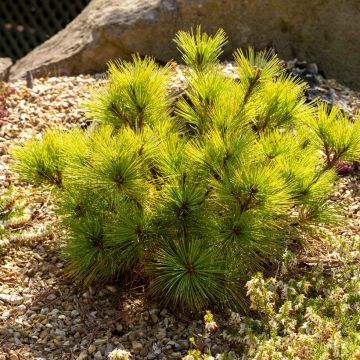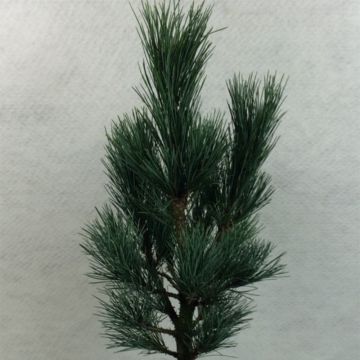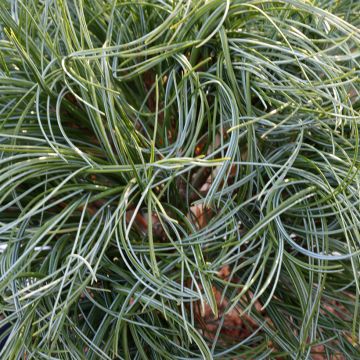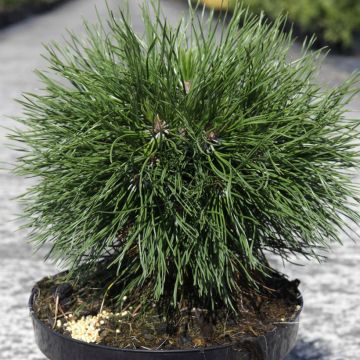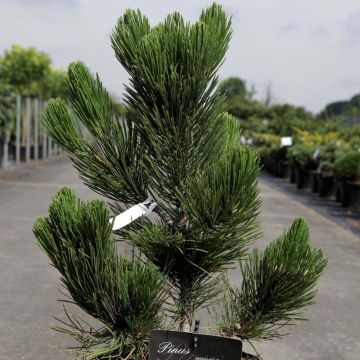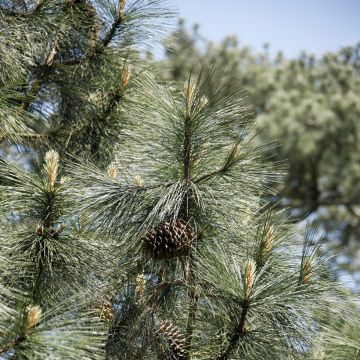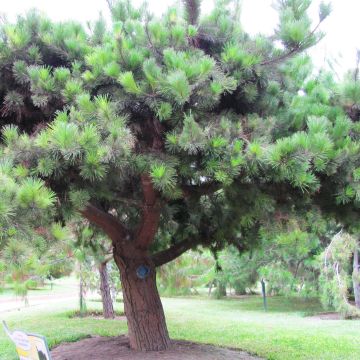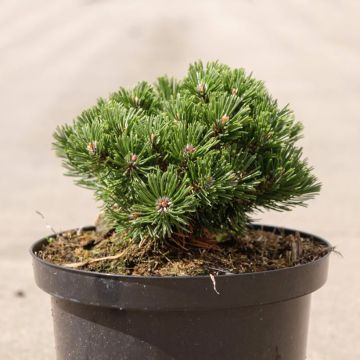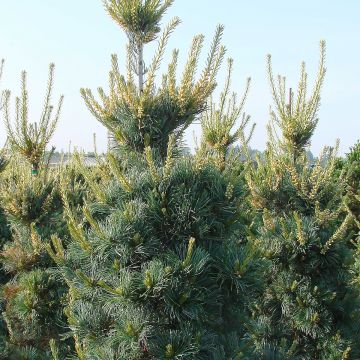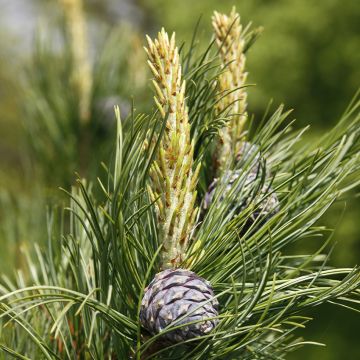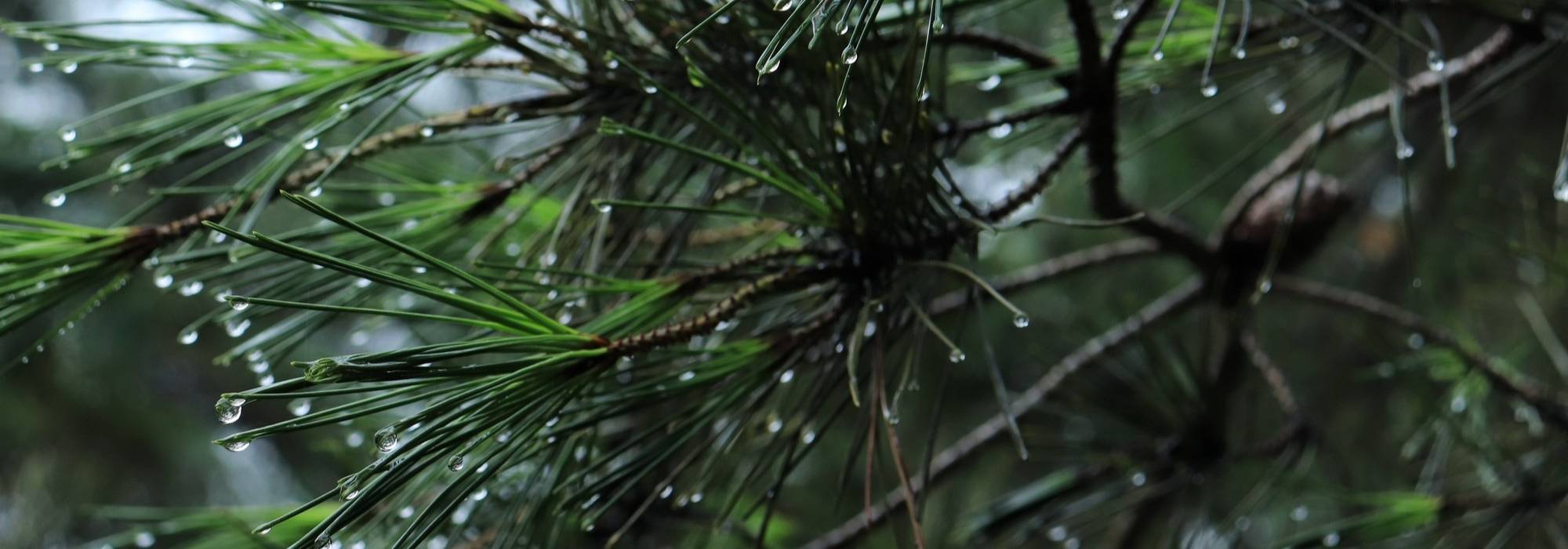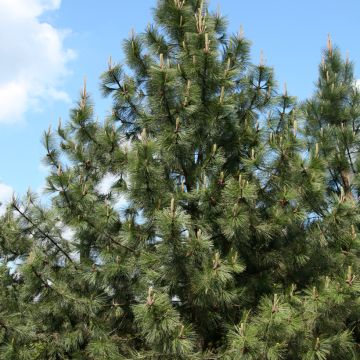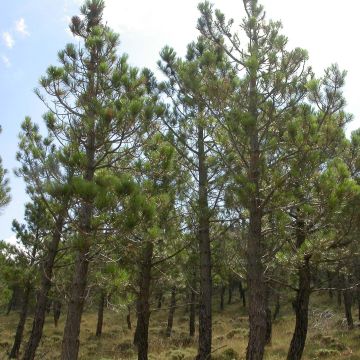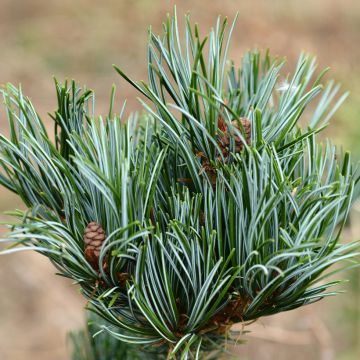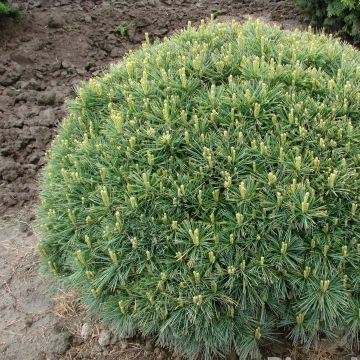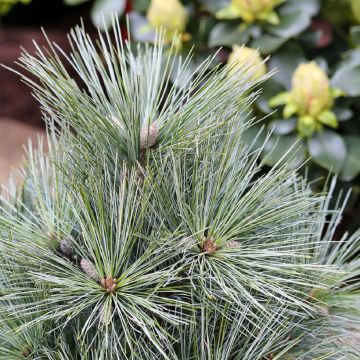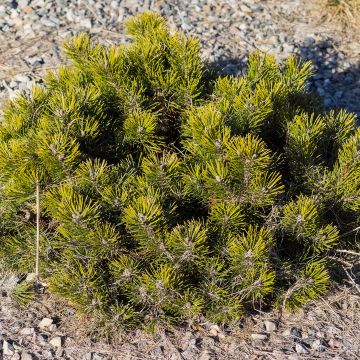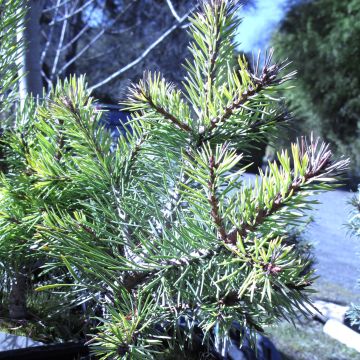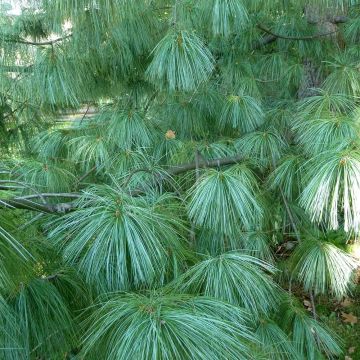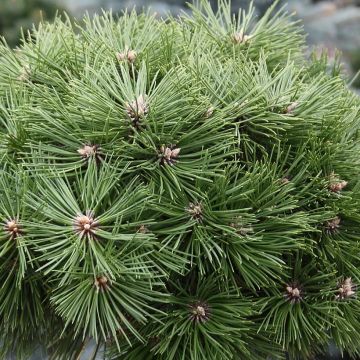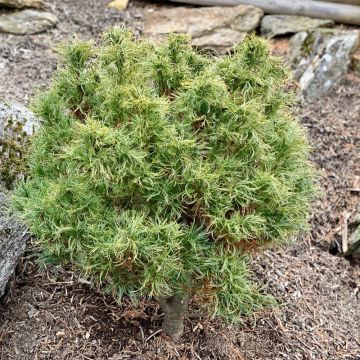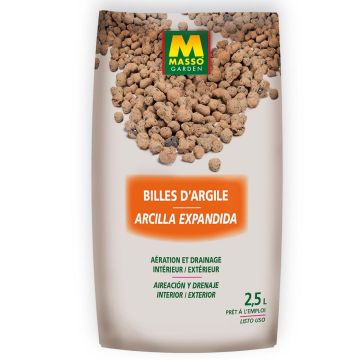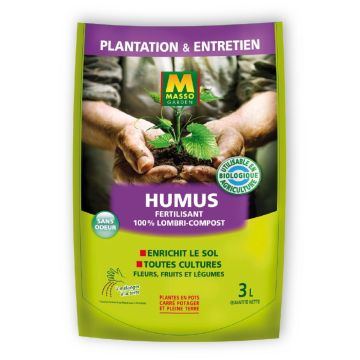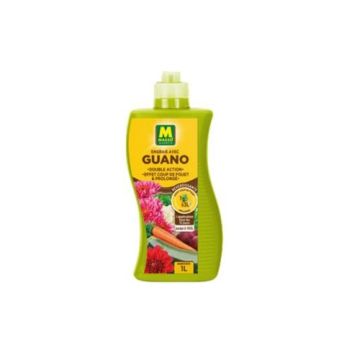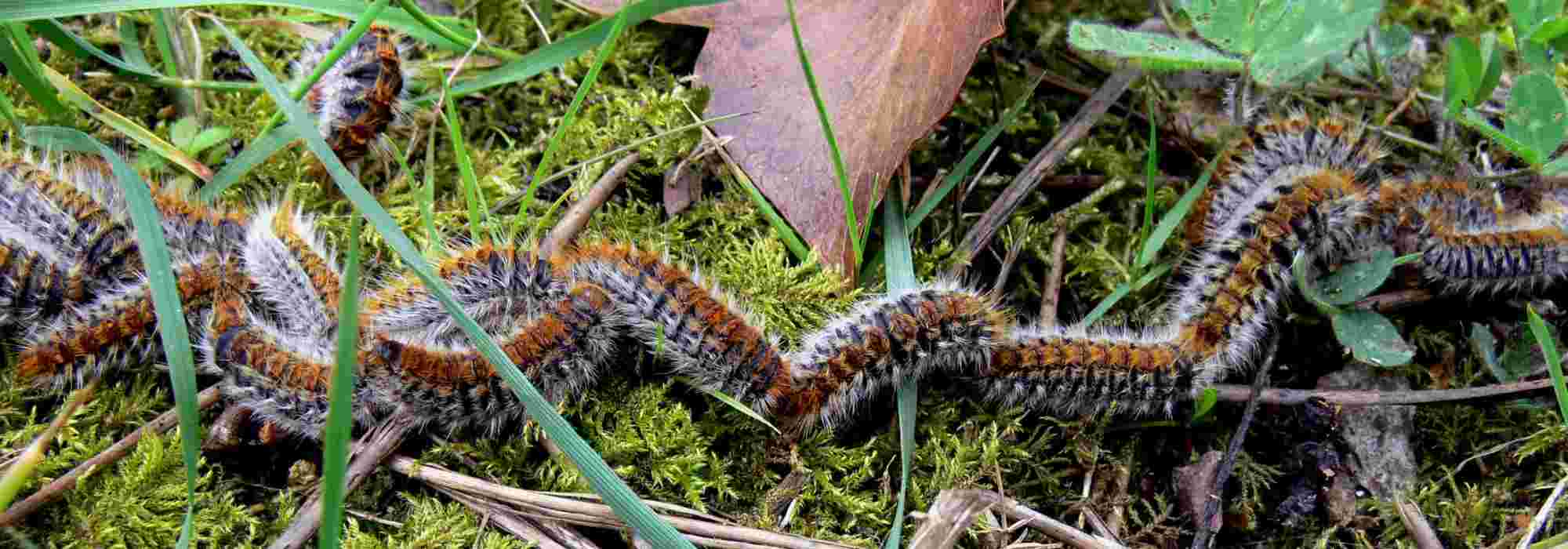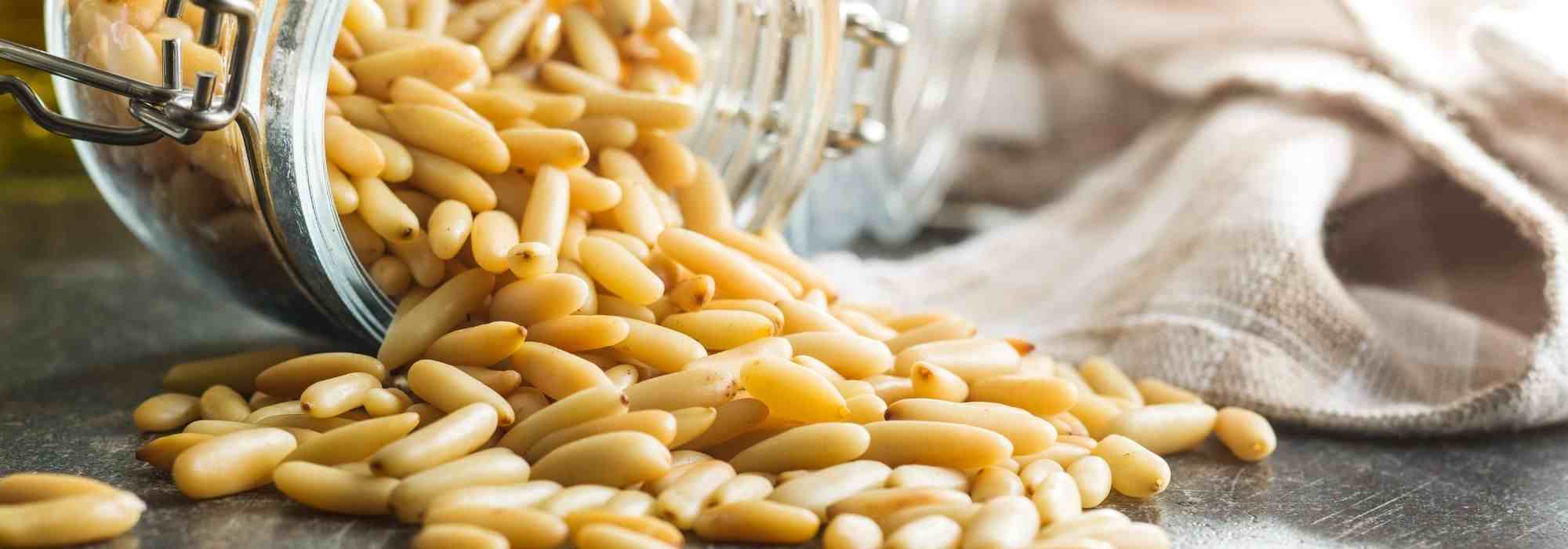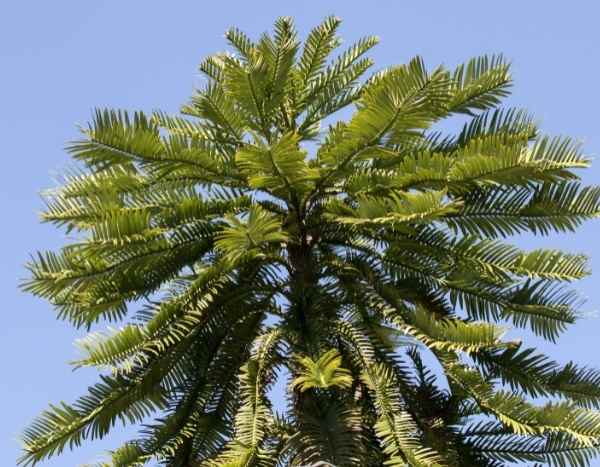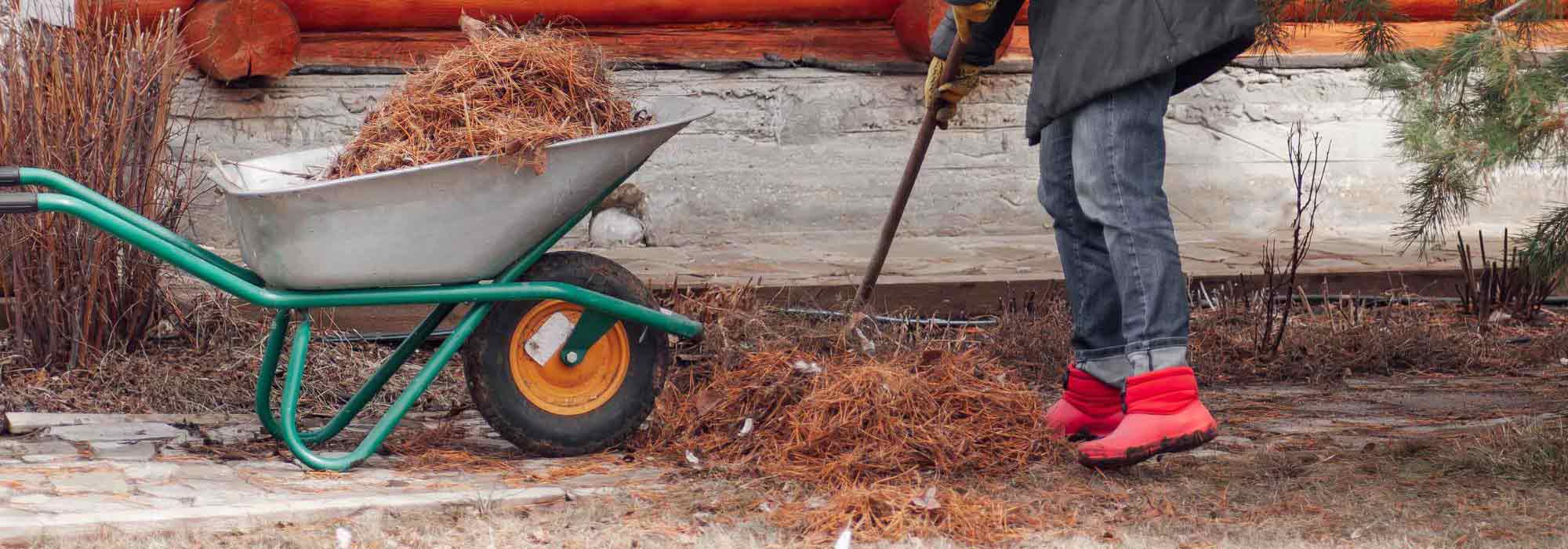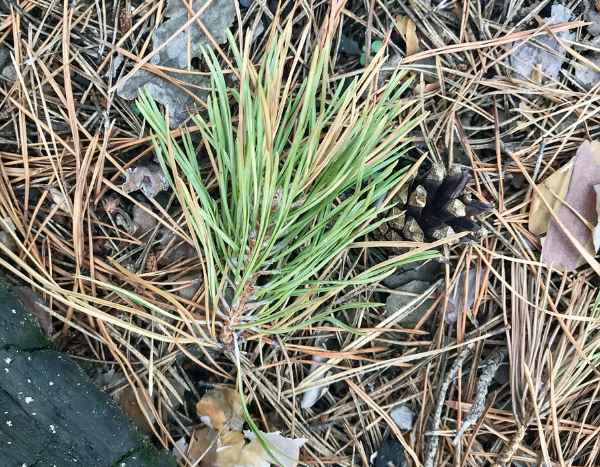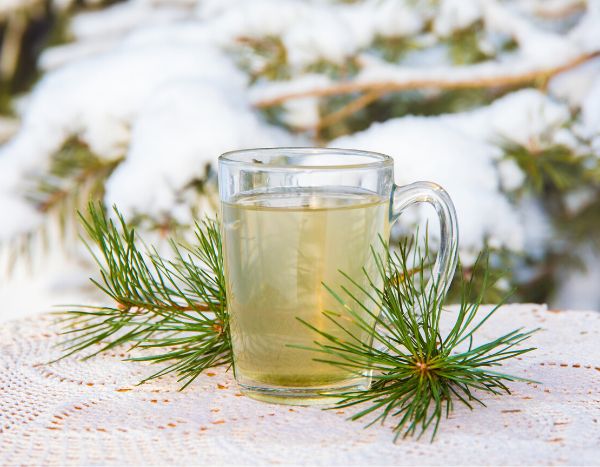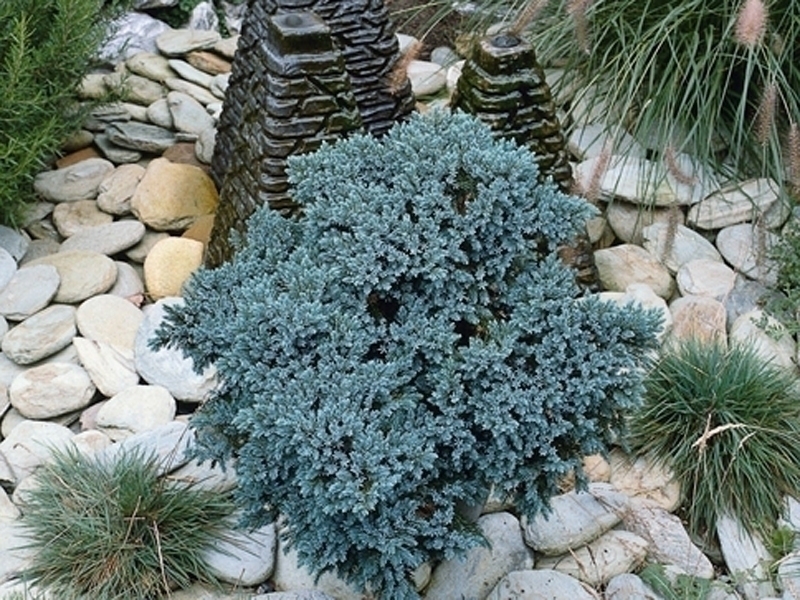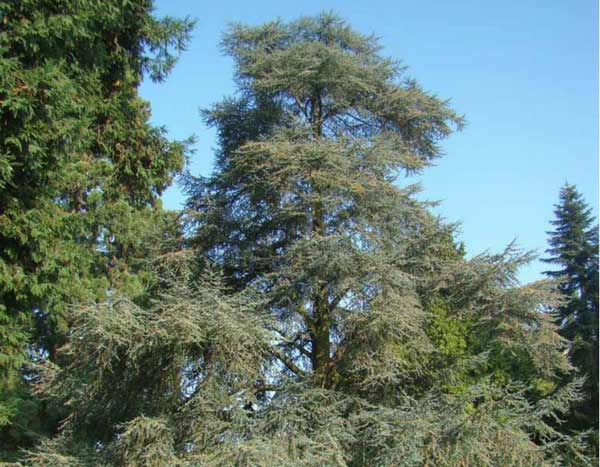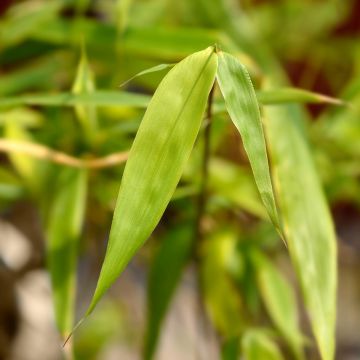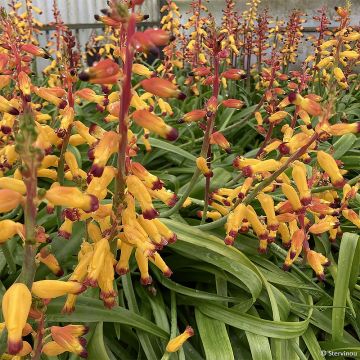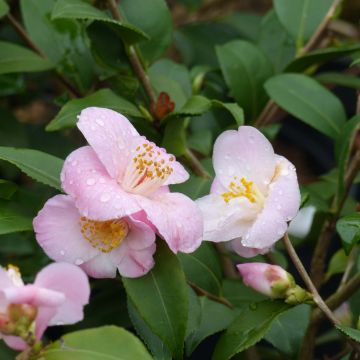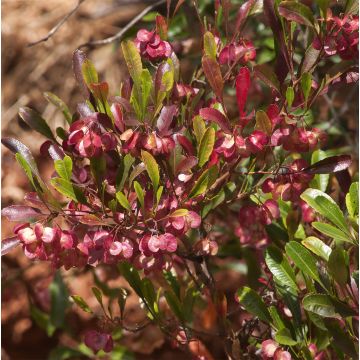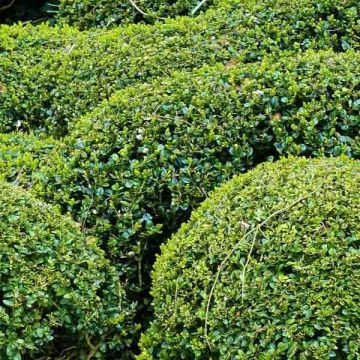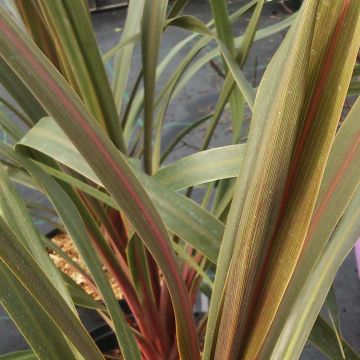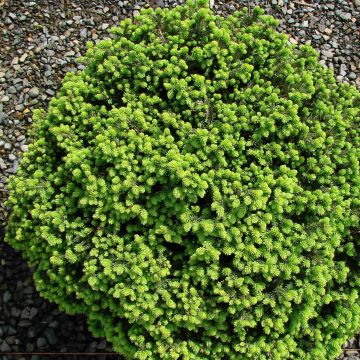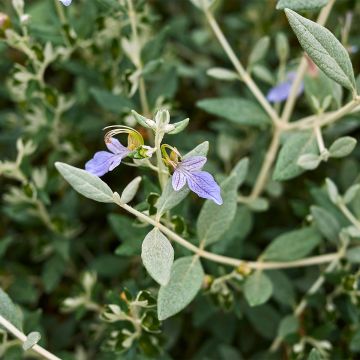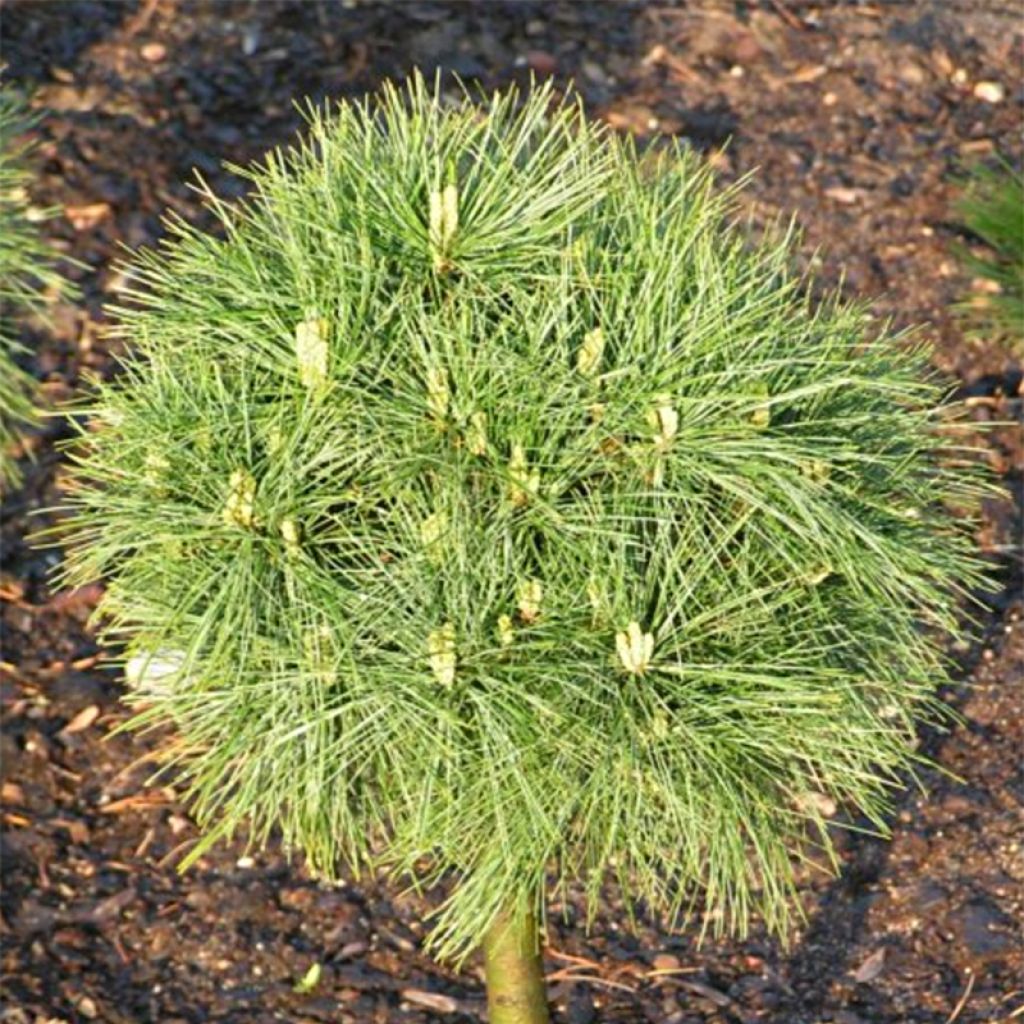

Pinus strobus Greg - Pin de Weymouth nain
Pinus strobus Greg - Eastern White Pine
Pinus strobus Greg
Eastern White Pine, Weymouth Pine, Northern White Pine
Special offer!
Receive a €20 voucher for any order over €90 (excluding delivery costs, credit notes, and plastic-free options)!
1- Add your favorite plants to your cart.
2- Once you have reached €90, confirm your order (you can even choose the delivery date!).
3- As soon as your order is shipped, you will receive an email containing your voucher code, valid for 3 months (90 days).
Your voucher is unique and can only be used once, for any order with a minimum value of €20, excluding delivery costs.
Can be combined with other current offers, non-divisible and non-refundable.
Why not try an alternative variety in stock?
View all →This plant carries a 24 months recovery warranty
More information
We guarantee the quality of our plants for a full growing cycle, and will replace at our expense any plant that fails to recover under normal climatic and planting conditions.
Would this plant suit my garden?
Set up your Plantfit profile →
Description
Pinus strobus 'Greg' is a miniature form of the Weymouth pine, forming a very compact, round and very dense bush, covered with bright green needle-like foliage. Its vegetation has a slightly feathery and very elegant texture, as well as very slow growth, making it a remarkable conifer for small spaces, rockeries, or pots on the terrace. It tolerates pruning very well, which allows it to be kept at very small dimensions. It is a variety that is not very demanding, liking well-drained soil that is not too chalky. It is resistant to drought once established. However, it requires full sun to thrive.
Pinus strobus, also known as the Eastern white pine or Weymouth pine, is a coniferous tree of the pine family, native to eastern North America, all the way to Newfoundland in Canada. This forest king is a monumental tree, a gigantic pyramidal Christmas tree reaching 90 m (295ft) in height in its original environment, but now hardly exceeding 45 m (148ft) in height due to the destruction of its habitat and extensive exploitation. It is a very hardy species, often planted for reforestation in forests, or as an ornamental tree in large parks.
Discovered in Vermont, United States, the 'Greg' variety, derived from this species, is distinguished by its very small size and its compact round bush habit, which can be further accentuated by pruning in autumn. Its growth is very slow, around 2 cm (1in) per year, so that at 15 years old, it will not exceed 90 cm (35in) in height and 1.20 m (4ft) in width. It is a multi-stemmed shrub, with branches emerging from the base, covered with very bright green, fine, soft, and flexible needles, ranging from 5 to 14 cm (2 to 6in) in length. They are grouped in bundles of 5 on the branches. Their lower surface has two bands of silver stomata (respiratory cells in plants). The bark of this shrub is smooth, greenish-grey on young plants, becoming brownish-grey and fissured over time. The lower part of the tree, when mature, shows a whitened bark, hence the common name 'Eastern white pine'. This variety can live for 50 years.
The dwarf Eastern white pine 'Greg' will find its place in all gardens, even the smallest ones, as it is not demanding and adapts to various soils, except for very chalky soils, as well as to numerous climates. In small spaces, it will stand out when planted alone and will also elegantly decorate a rockery or a bed. It will of course form a magnificent feature that will enhance balconies or patios, and will work wonders in a Japanese garden. It works well with large stones, the geometric lines of swimming pools, and architectural structures. It can be associated with grasses or dwarf conifers with a prostrate habit (Juniperus horizontalis Blue Chip), globose habit (Picea abies Little Gem), or columnar habit (Juniperus communis 'Sentinel'). The geometric qualities of conifers naturally impose themselves in the design of a contemporary garden, which prefers the aesthetics of shapes, silhouettes, and textures over the presence of many flowers. These plants, with reassuring permanence, structurally define a flower bed, mark the paths, border the terrace, easily replacing trimmed boxwood or holly. The key is to play with volumes and colours.
Pinus strobus Greg - Eastern White Pine in pictures


Plant habit
Foliage
Botanical data
Pinus
strobus
Greg
Pinaceae
Eastern White Pine, Weymouth Pine, Northern White Pine
Cultivar or hybrid
Other Pinus - Pine
View all →Planting and care
Pinus strobus 'Greg' should be planted from September to November and from February to June in ordinary well-drained soil, even clay or limestone. Choose a sunny spot or partially shaded position in hot climates. Soak the root balls well before planting. Add organic matter at planting and water generously for the first two years, and in the case of prolonged drought. In very poor soil, apply a special conifer fertilizer every year in April and cultivate the soil in summer. This very hardy conifer ,up to -30°C (1°F) at least, is not afraid of wind, adapts to poor soils, but it dislikes waterlogged soils in winter and summer heatwaves. To keep it even more compact, annual pruning can be carried out from September to November, by shortening the shoots that are considered unsightly, to achieve the desired shape over the years.
Planting period
Intended location
Care
Planting & care advice
This item has not been reviewed yet - be the first to leave a review about it.
Similar products
Haven't found what you were looking for?
Hardiness is the lowest winter temperature a plant can endure without suffering serious damage or even dying. However, hardiness is affected by location (a sheltered area, such as a patio), protection (winter cover) and soil type (hardiness is improved by well-drained soil).

Photo Sharing Terms & Conditions
In order to encourage gardeners to interact and share their experiences, Promesse de fleurs offers various media enabling content to be uploaded onto its Site - in particular via the ‘Photo sharing’ module.
The User agrees to refrain from:
- Posting any content that is illegal, prejudicial, insulting, racist, inciteful to hatred, revisionist, contrary to public decency, that infringes on privacy or on the privacy rights of third parties, in particular the publicity rights of persons and goods, intellectual property rights, or the right to privacy.
- Submitting content on behalf of a third party;
- Impersonate the identity of a third party and/or publish any personal information about a third party;
In general, the User undertakes to refrain from any unethical behaviour.
All Content (in particular text, comments, files, images, photos, videos, creative works, etc.), which may be subject to property or intellectual property rights, image or other private rights, shall remain the property of the User, subject to the limited rights granted by the terms of the licence granted by Promesse de fleurs as stated below. Users are at liberty to publish or not to publish such Content on the Site, notably via the ‘Photo Sharing’ facility, and accept that this Content shall be made public and freely accessible, notably on the Internet.
Users further acknowledge, undertake to have ,and guarantee that they hold all necessary rights and permissions to publish such material on the Site, in particular with regard to the legislation in force pertaining to any privacy, property, intellectual property, image, or contractual rights, or rights of any other nature. By publishing such Content on the Site, Users acknowledge accepting full liability as publishers of the Content within the meaning of the law, and grant Promesse de fleurs, free of charge, an inclusive, worldwide licence for the said Content for the entire duration of its publication, including all reproduction, representation, up/downloading, displaying, performing, transmission, and storage rights.
Users also grant permission for their name to be linked to the Content and accept that this link may not always be made available.
By engaging in posting material, Users consent to their Content becoming automatically accessible on the Internet, in particular on other sites and/or blogs and/or web pages of the Promesse de fleurs site, including in particular social pages and the Promesse de fleurs catalogue.
Users may secure the removal of entrusted content free of charge by issuing a simple request via our contact form.
The flowering period indicated on our website applies to countries and regions located in USDA zone 8 (France, the United Kingdom, Ireland, the Netherlands, etc.)
It will vary according to where you live:
- In zones 9 to 10 (Italy, Spain, Greece, etc.), flowering will occur about 2 to 4 weeks earlier.
- In zones 6 to 7 (Germany, Poland, Slovenia, and lower mountainous regions), flowering will be delayed by 2 to 3 weeks.
- In zone 5 (Central Europe, Scandinavia), blooming will be delayed by 3 to 5 weeks.
In temperate climates, pruning of spring-flowering shrubs (forsythia, spireas, etc.) should be done just after flowering.
Pruning of summer-flowering shrubs (Indian Lilac, Perovskia, etc.) can be done in winter or spring.
In cold regions as well as with frost-sensitive plants, avoid pruning too early when severe frosts may still occur.
The planting period indicated on our website applies to countries and regions located in USDA zone 8 (France, United Kingdom, Ireland, Netherlands).
It will vary according to where you live:
- In Mediterranean zones (Marseille, Madrid, Milan, etc.), autumn and winter are the best planting periods.
- In continental zones (Strasbourg, Munich, Vienna, etc.), delay planting by 2 to 3 weeks in spring and bring it forward by 2 to 4 weeks in autumn.
- In mountainous regions (the Alps, Pyrenees, Carpathians, etc.), it is best to plant in late spring (May-June) or late summer (August-September).
The harvesting period indicated on our website applies to countries and regions in USDA zone 8 (France, England, Ireland, the Netherlands).
In colder areas (Scandinavia, Poland, Austria...) fruit and vegetable harvests are likely to be delayed by 3-4 weeks.
In warmer areas (Italy, Spain, Greece, etc.), harvesting will probably take place earlier, depending on weather conditions.
The sowing periods indicated on our website apply to countries and regions within USDA Zone 8 (France, UK, Ireland, Netherlands).
In colder areas (Scandinavia, Poland, Austria...), delay any outdoor sowing by 3-4 weeks, or sow under glass.
In warmer climes (Italy, Spain, Greece, etc.), bring outdoor sowing forward by a few weeks.






























